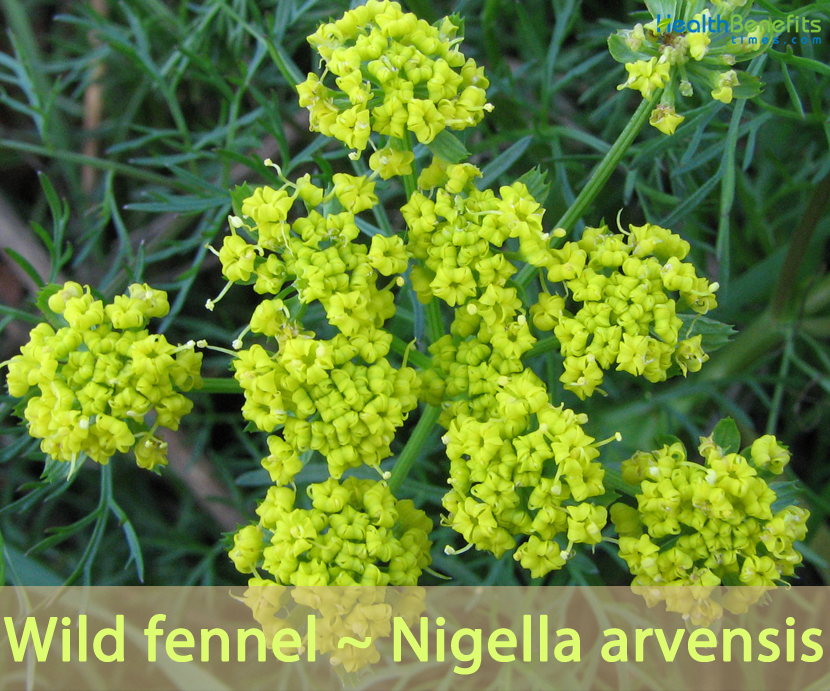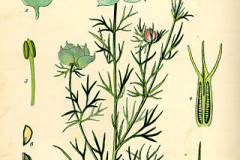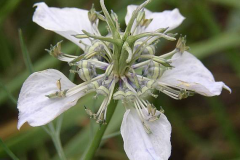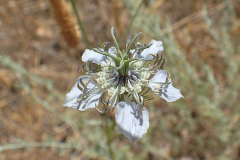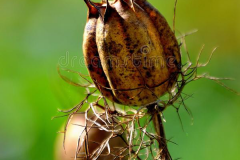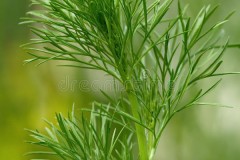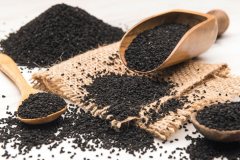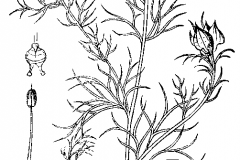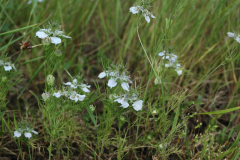Wild fennel is an herb capable of providing excellent benefits to the body. Additionally, it is used in the kitchen to prepare excellent dishes. It is a very fragrant aromatic plant with a particular flavor. Due to its organoleptic characteristics, this herb is capable of giving incredible benefits to the body. It is harvested from the wild for local use as a food. It can also be used in the kitchen to flavor some dishes of the Sicilian culinary tradition.
Wild Fennel Facts
| Wild fennel Quick Facts | |
|---|---|
| Name: | Wild fennel |
| Scientific Name: | Nigella arvensis |
| Origin | North Africa, central, southern and eastern Europe, the Caucasus region, and the Middle East as far as Iran, and has gone extinct in Switzerland and Crete |
| Shapes | Cylindrical capsules of 1.5 cm long, with very marked angles on the back of 3 prominent veins along their length |
| Health benefits | Support for digestive difficulties, flatulence, aerophagia, intestinal inflammations, heartburn, gas, bloating, angina, asthma, angina and coughs |
| Name | Wild fennel |
|---|---|
| Scientific Name | Nigella arvensis |
| Native | North Africa, central, southern and eastern Europe, the Caucasus region, and the Middle East as far as Iran, and has gone extinct in Switzerland and Crete |
| Common Names | Black bread-weed, Wild fennel, Nigella, Wild fennel-flower, field fennel flower, field fennel flower, field nigella |
| Name in Other Languages | Albanian: Nigela e arave, nigelë Arabic: Sanoudj, Kammoun essoued, Habba essouda, Kemmoun chedaf, Chit, Djahta, Bou nefa, Zerara, Kemmoun lekhal, Ti kamnin Bulgarian: Polska čelebitka (полска челебитка) Chinese: Tian ye hei zhong cao Croatian: Poljska crnjika Czech: Cernucha rolní Danish: Ager-sortkommen, mark-nigella Dutch: Wilde nigelle English: Black bread-weed, Wild fennel, Nigella, Wild fennel-flower, field fennel flower, field fennel flower, field nigella Finnish: Rikkaneito French: Nigelle bâtarde, Poivrette commune, Nigelle des champs, nigelle des prés, patte d’araignée German: Acker-Schwarzkümmel, Wilder Schwarzkümmel Greek: Melánthion to arouraío (Μελάνθιον το αρουραίο), mavrokoúki (μαυροκούκι) Hebrew: Ketzach hassadeh, קצח השדה, קֶצַח הַשָּׂדֶה Hungarian: Kandilla, vetési katicavirág Italian: Damigella campestre, fiore di passion, nigella dei campi Latin: Nigella Norwegian: Akersvartkarve Polish: Czarnuszka polna Portuguese: Barbas-de-velho, damas-entre-verde Romanian: Negrușcă Russian: Chernushka polevaia (Чернушка полевая) Serbian: Mačkovi brkovi (мачкови бркови), poljska crnika (пољска црника), crnika (црника) Slovak: Cernuška roľná Slovenian: Divja črnika Spanish: Arañuela menor, estrella de campo, neguilla Swedish: Åkernigella, åkerkymmel Turkish: Yabani çörek out, tarla çörekotu Ukrainian: Chornushka polʹova (чорнушка польова) |
| Plant Growth Habit | Herbaceous perennial herb |
| Growing Climates | Cornfields, dry hills on calcareous soils, eels, orchards, on dry steppe slopes |
| Stem | Erect stem, branched, with long branches |
| Leaf | Alternate, simple, long petiolate at the base of the plant then becoming sessile in the upper part. Petiole of basal leaves widening at the base into a sheathing gutter. Blade deeply divided to the midrib, resembling a 2-3-pennate compound leaf, with linear lobes with acute apex |
| Flowering season | June to September |
| Flower | Flowers solitary and terminal at the tips of stems and twigs, surrounded by bracts deeply divided into filiform, leaf-like lobes. Corolla rotate with 5 petaloid sepals fused at the base then spread out in tabular form with a narrow base and a widely spatulate top, light blue to whitish |
| Fruit Shape & Size | Fruits consist of 3-7 leaflets fused in the lower half forming oblong cylindrical capsules of 1.5 cm long, with very marked angles on the back of 3 prominent veins along their length, with 3-7 carpels separating in the upper half into long narrow more or less curved tips |
| Flavor/Aroma | Sweet yet powerful licorice-like flavor |
| Plant Parts Used | Seed, plant |
| Season | August to October |
| Other Facts |
|
Plant Description
Wild fennel is herbaceous perennial herbs that normally reach 40 cm in height. The plant is found growing in cornfields, dry hills on calcareous soils, eels, orchards and on dry steppe slopes. The plant has erect stems that are branched with long branches. Leaves are alternate, simple, and long petiolate at the base of the plant then becoming sessile in the upper part. Petiole of basal leaves widening at the base into a sheathing gutter. Blade is deeply divided to the midrib, resembling a 2-3-pennate compound leaf, with linear lobes with acute apex.
Flowers & Fruits
Flowers are solitary and terminal at the tips of stems and twigs, surrounded by bracts deeply divided into filiform, leaf-like lobes. Corolla rotate with 5 petaloid sepals fused at the base then spread out in tabular form with a narrow base and a widely spatulate top, light blue to whitish. The petals are reduced to nectaries in cupules equipped with a beak, at the base of the sepals. Numerous stamens are green yellow colored. Flowering normally occurs in between June to September.
Fertile flowers are followed by fruits that consist of 3-7 leaflets fused in the lower half forming oblong cylindrical capsules of 1.5 cm long, with very marked angles on the back of 3 prominent veins along their length, with 3-7 carpels separating in the upper half into long narrow more or less curved tips. Seeds are covered with papillae, 2.2-2.6 mm long and 1.3-1.6 mm wide, trigonal oval and blackish.
Traditional uses and benefits of Wild fennel
- In phyto-therapy, dried fruits or essential oil are used.
- Wild fennel is used for those who have digestive difficulties, flatulence or aerophagia.
- It can be used for reducing the painful component of irritable bowel syndrome.
- Wild fennel flavored herbal tea is perfect for soothe stomach aches and intestinal inflammations.
- Wild fennel has been used to treat heartburn, gas, bloating, angina, asthma, angina, coughs.
- It has also been used as a digestive aid, appetite suppressant, analgesic digestive aid and is said to have anti-inflammatory properties.
Culinary Uses
- Seed can be consumed raw or cooked.
- It is normally used as a flavoring on cakes, bread etc.
- Wild fennel uses fresh or dried flowers, seeds, which are more or less sweet, peppery or bitter, depending on the variety, leaves and twigs.
- Flowers are used to flavor boiled chestnuts, mushrooms in the oven or in a pan, olives in brine and pork, in particular porchetta.
- Seeds are mainly used to flavor Apulian tarallini, donuts or other homemade desserts and to spice hot wine, herbal teas or brines.
- It provides a fresh taste to crackers, buns, breadsticks, and bretzel as other baked foods.
- It can be eaten raw, braised, caramelized, roasted and pureed into soups and sauces.
- Wild Fennel is a quintessential compliment to seafood, especially crustaceans and bivalves such as scallops, and oysters.
- In eastern countries they are commonly used for seasoning curries and other dishes, and the Egyptians spread them on bread and put them on cakes like comfits.
Precautions
- Wild fennel, if consumed inappropriately, can cause nagging stomach pains and even dysentery.
- Wild fennel in very high doses can have hallucinogenic effects.
- Small children may dislike wild fennel and it may cause annoying heartburn.
References:
https://pfaf.org/user/Plant.aspx?LatinName=Nigella+arvensis
https://www.cabi.org/isc/datasheet/115793#toidentity
http://www.theplantlist.org/tpl1.1/record/kew-2381639
https://en.wikipedia.org/wiki/Nigella_arvensis
https://portal.wiktrop.org/species/show/325446
https://gd.eppo.int/taxon/NIGAR
http://temperate.theferns.info/plant/Nigella+arvensis


